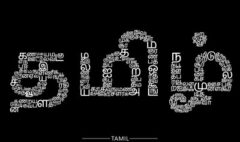How to Use Tamil to Narrate a Story
How to Use Tamil to Narrate a Story
How to Use Tamil to Narrate a Story: A Guide to the Art of Storytelling
Storytelling is a fundamental human art form. It is the way we share our history, our values, and our dreams. In Tamil culture, the tradition of storytelling (கதை சொல்லுதல் – Katai collutal) is a rich and deeply cherished one, from the ancient epic poems to the beloved folk tales told by grandparents. For a student of the Tamil language, learning how to narrate a simple story is a major and wonderfully rewarding milestone. It is a skill that moves you beyond simple conversational phrases and into the world of creative expression and structured narrative. Mastering the basics of storytelling in Tamil is a key step towards a more advanced and fluent command of the language.
This may seem like a complex task, but the beauty of narration in Tamil is that it can be built upon a foundation of simple and clear grammatical structures. This guide will provide you with the essential building blocks you need to start telling your own stories. We will explore the key vocabulary, the basic Tamil story grammar, and some tips to help you on your journey of creative Tamil writing and oral narration.
Part 1: The Essential Building Blocks – The Vocabulary of Narrative
Every story needs a few key ingredients to get started.
Opening and Closing Phrases:
- “Once upon a time…” – “ஒரு காலத்துல…” (Oru kālattula…) – This is a very common and classic story opener.
- “One day…” – “ஒரு நாள்…” (Oru nāḷ…)
- “A long, long time ago…” – “ரொம்ப வருஷத்துக்கு முன்னாடி…” (Rompa varuṣattukku muṉṉāṭi…)
- “The End” – “முடிந்தது” (Muṭintatu) or “சுபம்” (Cupam) – “Auspicious end.”
- “The moral of the story is…” – “இந்தக் கதையின் நீதி என்னவென்றால்…” (Intak kataiyiṉ nīti eṉṉaveṉṟāl…)
Connecting and Sequencing Words (இணைப்புச் சொற்கள்):
These are the crucial “glue” words that help your story to flow smoothly from one event to the next.
- And – மற்றும் (maṟṟum)
- Then / After that – அப்புறம் (appuṟam) or பிறகு (piṟaku)
- So / Therefore – அதனால் (ataṉāl)
- But – ஆனால் (āṉāl)
- Suddenly – திடீரென்று (tiṭīreṉṟu)
- At that time – அப்போது (appōtu)
Part 2: The Core of the Story – Characters and Setting
Every story needs a “who” and a “where.”
Describing Characters (கதாபாத்திரங்கள்):
- King – ராஜா (rājā)
- Queen – ராணி (rāṇi)
- Boy – சிறுவன் (siṟuvaṉ)
- Girl – சிறுமி (siṟumi)
- Old Man – வயதானவர் (vayatāṉavar)
- Lion – சிங்கம் (ciṅkam)
- Fox – நரி (nari)
Describing the Setting (இடம்):
- In a forest – ஒரு காட்டில் (oru kāṭṭil)
– In a village – ஒரு கிராமத்தில் (oru kirāmattil)
– In a palace – ஒரு அரண்மனையில் (oru araṇmaṉaiyil)
– Near a river – ஒரு ஆற்றின் அருகே (oru āṟṟiṉ arukē)
Part 3: The Grammar of Narration – The Past Tense
The most important element of Tamil story grammar is the past tense. Most stories are told about events that have already happened. While Tamil verb conjugation can be complex, for simple storytelling, you only need to master a few key past tense endings for the third person (he, she, it, they).
Simple Past Tense Endings:
- For “he” (masculine singular): The verb often ends in -ஆன் (-āṉ).
Example: “வந்தான்” (vantāṉ) – “He came.” (from the root வா – vā) - For “she” (feminine singular): The verb often ends in -ஆள் (-āḷ).
Example: “பார்த்தாள்” (pārttāḷ) – “She saw.” (from the root பார் – pār) - For “it” (neuter singular): The verb often ends in -அது (-atu).
Example: “ஓடியது” (ōṭiyatu) – “It ran.” (from the root ஓடு – ōṭu) - For “they” (human plural): The verb often ends in -ார்கள் (-ārkaḷ).
Example: “பேசினார்கள்” (pēciṉārkaḷ) – “They spoke.” (from the root பேசு – pēcu)
By learning to recognize and use these simple past tense endings, you can construct a basic narrative with ease.
Part 4: Let’s Build a Simple Story Together
Let’s use our building blocks to construct a very simple version of “The Lion and the Mouse.”
The Story:
ஒரு காலத்துல, ஒரு பெரிய காட்டில் ஒரு சிங்கம் இருந்தது.
(Oru kālattula, oru periya kāṭṭil oru ciṅkam iruntatu.)
Once upon a time, in a big forest, there was a lion.
ஒரு நாள், அந்த சிங்கம் தூங்கிக் கொண்டிருந்தது.
(Oru nāḷ, anta ciṅkam tūṅkik koṇṭiruntatu.)
One day, that lion was sleeping.
அப்போது, ஒரு சிறிய எலி அந்த வழியாக வந்தது.
(Appōtu, oru ciṟiya eli anta vaḻiyāka vantatu.)
At that time, a small mouse came that way.
எலி சிங்கத்தின் மேல் ஏறியது.
(Eli ciṅkattiṉ mēl ēṟiyatu.)
The mouse climbed on top of the lion.
திடீரென்று, சிங்கம் எழுந்தது. அதற்கு மிகவும் கோபம் வந்தது.
(Tiṭīreṉṟu, ciṅkam eḻuntatu. Ataṟku mikavum kōpam vantatu.)
Suddenly, the lion woke up. It got very angry.
சிங்கம் எலியைப் பிடித்தது.
(Ciṅkam eliyaip piṭittatu.)
The lion caught the mouse.
எலி பயத்தில் அழுதது. “தயவுசெய்து என்னை விட்டுவிடுங்கள்,” என்று சொன்னது.
(Eli payattil aḻutatu. “Tayavuceytu eṉṉai viṭṭuviṭuṅkaḷ,” eṉṟu coṉṉatu.)
The mouse cried in fear. “Please leave me,” it said.
சிங்கம் எலியை விட்டுவிட்டது.
(Ciṅkam eliyai viṭṭuviṭṭatu.)
The lion let the mouse go.
Tips for Better Storytelling
- Use Simple Sentences: When you are starting out, do not try to write long, complex sentences. Short, clear, Subject-Object-Verb sentences are perfect.
- Show, Don’t Just Tell: Instead of saying “The king was sad,” you could say “The king cried.” (ராஜா அழுதார் – Rājā aḻutār). Using action words makes your story more vivid.
- Add Dialogue: Including simple dialogue makes your story much more engaging. Use the word “என்று சொன்னது” (eṉṟu coṉṉatu – “it said”) or “என்று கேட்டது” (eṉṟu kēṭṭatu – “it asked”) after a piece of dialogue.
- Practice Out Loud: Storytelling is an oral art. After you have written your simple story, practice reading it out loud. This will help you to get a feel for the rhythm and the flow of the language.
Conclusion: Unleash Your Inner Storyteller
The art of storytelling in Tamil is a beautiful and rewarding skill that will take your language abilities to a whole new level. It is a key part of creative Tamil writing and a wonderful way to connect with both children and adults. By starting with a simple plot, using the essential narrative vocabulary, and mastering a few basic past tense verb forms, you can begin to weave your own tales. Don’t be afraid to start small. Every great storyteller began with a simple “Once upon a time…” Your journey into the wonderful world of narration in Tamil starts today.








